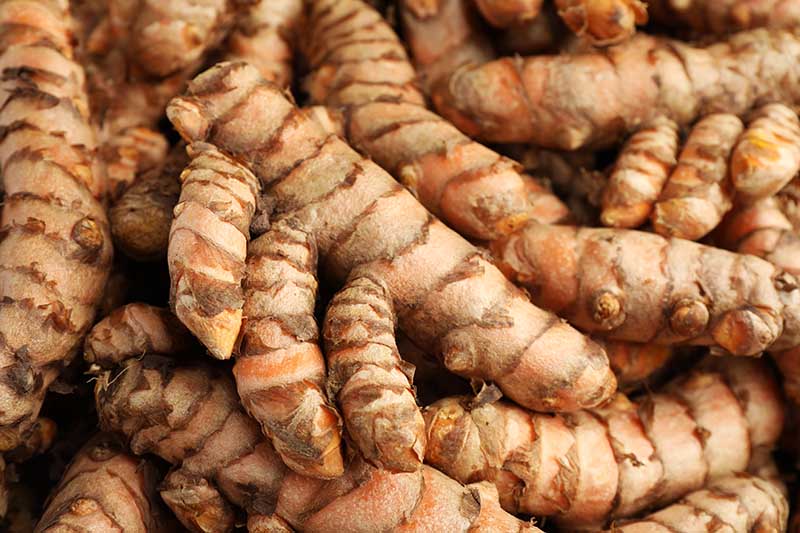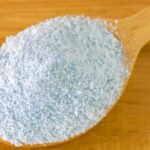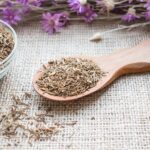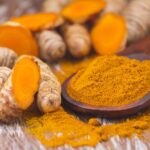Curcuma longa, commonly known as turmeric, is a rhizomatous plant that has earned a prominent place in both kitchens and medicine cabinets around the world. This yellow-rooted plant has a storied history dating back thousands of years, not only for its culinary uses but also for its rich therapeutic benefits. The rhizomes of Curcuma longa, from which turmeric and its active compound curcumin are derived, have been the subject of considerable attention in both traditional medicine and modern scientific research.
In this post, we’ll explore the rich history of Curcuma longa, the significance of its rhizomes, and the many health benefits they offer.
The History of Curcuma Longa: A Journey Through Time
Curcuma longa is native to Southeast Asia, specifically the Indian subcontinent, and has been used for millennia in a variety of cultural contexts. Its long history begins in ancient India, where the rhizomes were prized not only for their culinary appeal but also for their medicinal properties. In Ayurveda, the traditional Indian system of medicine, turmeric has been used for over 5,000 years to treat a wide range of conditions, including digestive problems, skin issues, and inflammatory conditions.
The rhizomes of Curcuma longa were also used in religious ceremonies, symbolizing purity and prosperity. Ancient Indian texts, such as the Sushruta Samhita (an ancient Ayurvedic medical treatise), refer to turmeric’s ability to purify the body and mind. It was also used in Hindu wedding rituals, where turmeric paste was applied to the bride and groom’s skin for its symbolic purification and beautifying properties.
In the Middle East and China, turmeric was similarly valued for its medicinal properties. It wasn’t until the 18th century that turmeric started to make its way to Europe, where it was initially used as a cheaper substitute for saffron, the expensive golden spice.
It wasn’t until the late 20th century that Western researchers began to isolate and study the active compounds in turmeric, particularly curcumin, which has been shown to have significant therapeutic potential.
What Are Curcuma Longa Rhizomes?
The term “rhizome” refers to an underground stem that serves as the storage organ of the plant. In the case of Curcuma longa, the rhizomes are thick, tuberous, and fleshy, and they are the part of the plant harvested for both culinary and medicinal use. These rhizomes are typically boiled, dried, and ground into the powder known as turmeric. Curcumin, the active compound responsible for turmeric’s distinctive color and much of its health benefits, is concentrated in the rhizomes.
Curcuma longa plants are typically cultivated in tropical and subtropical regions, particularly in India, Indonesia, and other Southeast Asian countries, where the climate supports the plant’s growth. The rhizomes are harvested once the plant’s leaves begin to yellow, and the roots are carefully processed for both culinary and medicinal uses.
The Health Benefits of Curcuma Longa Rhizomes
Curcuma longa rhizomes are more than just a flavorful ingredient; they are a powerhouse of health benefits. Here are some of the most significant ways the rhizomes of Curcuma longa support well-being:
1. Anti-Inflammatory Properties
One of the primary reasons Curcuma longa is so highly regarded in both traditional and modern medicine is its anti-inflammatory effects. Chronic inflammation is associated with a wide range of diseases, including arthritis, heart disease, diabetes, and certain cancers. The active compounds in Curcuma longa rhizomes, particularly curcumin, have been shown to inhibit key inflammatory pathways in the body. Studies suggest that curcumin may be as effective as some anti-inflammatory drugs in managing conditions like osteoarthritis and rheumatoid arthritis, without the same risk of side effects.
2. Antioxidant Power
Curcuma longa rhizomes are rich in antioxidants, compounds that help protect the body’s cells from damage caused by free radicals. Free radicals are unstable molecules that can lead to oxidative stress, contributing to aging and the development of chronic diseases. Curcumin, in particular, has been shown to scavenge free radicals and reduce oxidative damage, promoting overall health and longevity.
3. Improved Digestive Health
In Ayurvedic medicine, Curcuma longa has long been used to treat digestive issues. The rhizomes stimulate the production of bile, which aids in the digestion of fats. This makes turmeric a common remedy for indigestion, bloating, and gas. Additionally, the anti-inflammatory properties of Curcuma longa may help alleviate symptoms of conditions like irritable bowel syndrome (IBS), Crohn’s disease, and ulcerative colitis. By soothing the digestive tract and promoting healthy bile production, Curcuma longa rhizomes can support optimal digestion and gut health.
4. Brain Health and Cognitive Function
Emerging research has shown that curcumin, derived from Curcuma longa rhizomes, may have a profound impact on brain health. Studies suggest that curcumin can increase levels of brain-derived neurotrophic factor (BDNF), a protein involved in the growth and maintenance of brain cells. Increased BDNF is associated with improved cognitive function and a reduced risk of neurodegenerative diseases like Alzheimer’s disease and Parkinson’s disease.
Additionally, the anti-inflammatory and antioxidant effects of Curcuma longa may help protect the brain from oxidative stress and inflammation, both of which are thought to contribute to cognitive decline and neurodegeneration.
5. Heart Health
Curcuma longa rhizomes have been shown to benefit heart health in several ways. Curcumin can improve the function of the endothelium, the lining of the blood vessels, which helps regulate blood pressure, blood clotting, and other aspects of vascular health. By promoting a healthy endothelial function, curcumin may help reduce the risk of cardiovascular diseases, including high blood pressure, atherosclerosis, and heart disease.
Additionally, Curcuma longa has been shown to have cholesterol-lowering effects, potentially improving the balance of HDL (good) cholesterol and LDL (bad) cholesterol in the body.
6. Cancer Prevention and Treatment Support
While Curcuma longa rhizomes are not a cure for cancer, there is promising research suggesting that the compounds in turmeric, especially curcumin, may play a role in cancer prevention. Curcumin has been found to inhibit the growth and spread of cancer cells, reduce tumor size, and even enhance the effectiveness of certain chemotherapy drugs. Its ability to interfere with various signaling pathways involved in cancer cell proliferation, metastasis, and angiogenesis makes Curcuma longa a powerful adjunct in cancer treatment.
7. Skin Health
The use of Curcuma longa rhizomes in skincare dates back centuries. The active compounds in turmeric have anti-inflammatory, antimicrobial, and antioxidant properties, which can help treat various skin conditions such as acne, eczema, and psoriasis. Turmeric paste or oils are often applied to the skin to reduce redness, inflammation, and swelling. It’s also commonly used in face masks to brighten the skin and reduce the appearance of dark spots or hyperpigmentation.
8. Mood Enhancement
Recent studies suggest that curcumin may also help manage symptoms of depression and anxiety. Curcumin’s anti-inflammatory and antioxidant properties may support brain health, and some research suggests that it can help increase serotonin and dopamine levels, two neurotransmitters associated with mood regulation. Although more research is needed, early findings suggest that curcumin could be a useful adjunct in managing mood disorders.
Conclusion
Curcuma longa rhizomes are a cornerstone of both traditional medicine and modern wellness. From their anti-inflammatory and antioxidant properties to their potential in supporting brain, heart, and skin health, these golden roots offer an array of therapeutic benefits. With its deep cultural history and growing scientific recognition, the rhizomes of Curcuma longa continue to demonstrate their timeless value.











